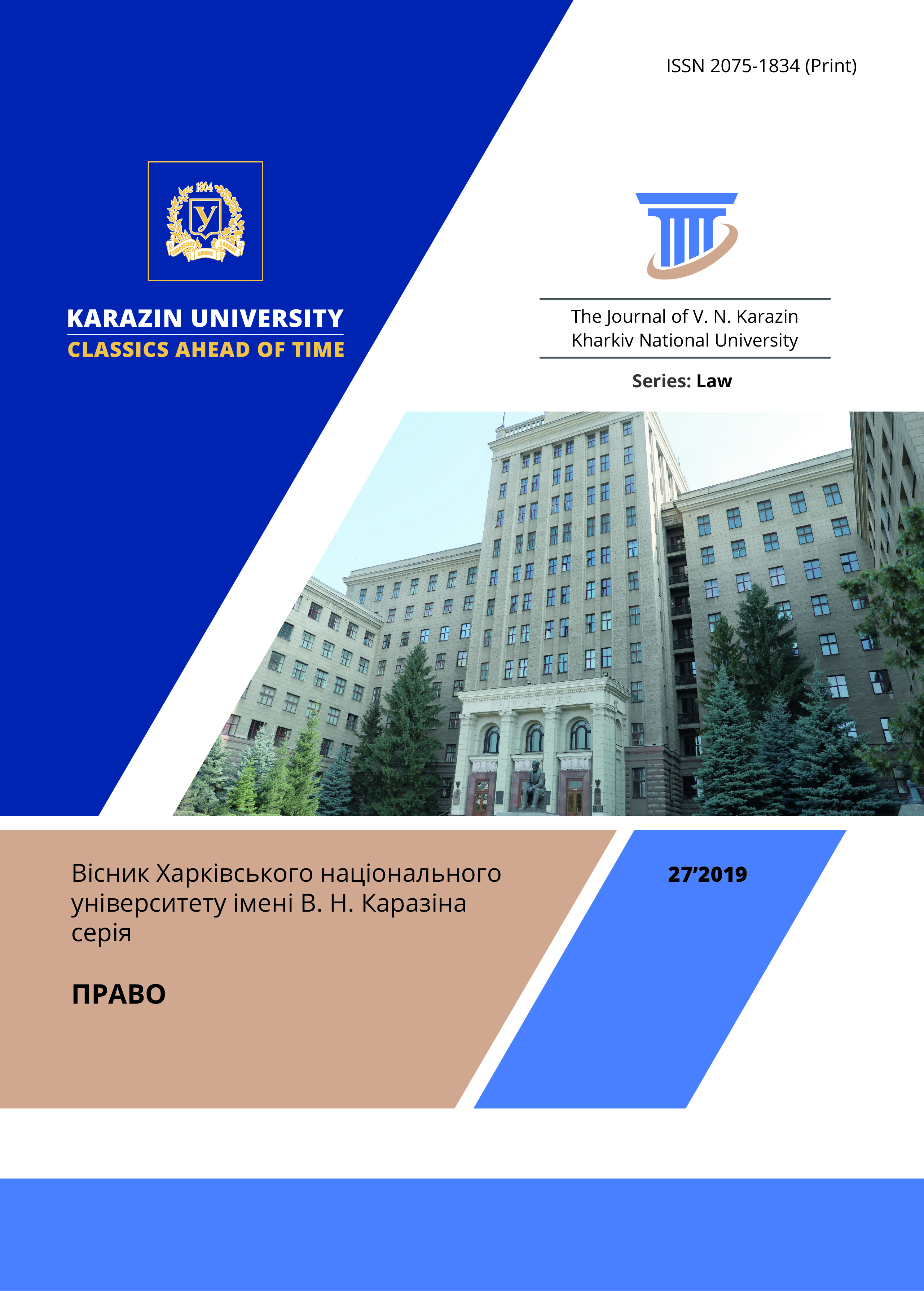VIOLENCE AS A GENERAL CATEGORY OF PART OF TEACHING ABOUT CIRCUMSTANCES EXCLUDING THE CRIME ACTS
Abstract
The article gives the author’s definition of the concept of criminal violence and analyses its main types: physical and mental. The problems of the criminal law assessment of violence are considered as a sign of certain circumstances precluding the criminality of the act. The attention is focused on the fact that violence is an important category of teaching about the circumstances precluding the criminality of an act. It emphasizes that: violence acts as a legal basis for the existence of such circumstances; its existence gives the right to "unlimited" defence; it serves as the basis for bringing to criminal responsibility persons who have exceeded the limits of causing necessary and sufficient harm. The author draws attention to the importance of the criminal law assessment of subjective signs of violence. It is indicated that they are: the intent, purpose and motivation (motives) of committing actions. The sole purpose of such actions should be the goal of stopping unlawful acts and eliminating the danger. In the article, motivation is considered as a set of motives of actions similar in nature and content. It can be hostile, instrumental, negativistic and mixed. Establishing the type of motivation significantly affects the qualification of actions and the responsibility of the perpetrators. It is pointed out that crimes that are committed when the limits are exceeded, which are determined by the rules on circumstances precluding criminality, are related to the so-called “impulsive” crimes that are often committed in a state of emotional agitation (affect). This significantly affects the qualification of actions of the perpetrators, and in some cases leads to the release of the latter from criminal responsibility.
Methods. When writing the article, the dialectical method, the methods of logical and historical analysis were used. They allowed analysing the existing criminal legislation and its historical development in the relevant field. Such a sociological method, such as the study of documents, makes it possible to back up the findings with the results of a study of judicial practice materials on the subject matter under investigation.
Results and conclusions. Criminal violence in the General part of the doctrine of circumstances precluding the criminality of an act has the following meaning: it is an important category not only of the Special, but also of the General part of the legislation on criminal liability; is a category of teaching circumstances that exclude the criminality of the act; significantly affects the qualification of actions of the perpetrators in cases that are determined by the rules on the circumstances precluding the criminality of the act; in analysing the types of violence, both objective and subjective signs are important; together with the wilfulness of violent actions, the purpose and motivation (motives) of such actions matter; motivation of violent actions can be hostile, instrumental, negativistic and mixed; it characterizes the legal basis of certain circumstances precluding the criminality of the act; its use is the basis for the subject to "unlimitedly" use force for protection; it serves as the basis for bringing to criminal responsibility in case of exceeding the limits in certain circumstances, precluding the criminality of the act.
Downloads
References
Навроцький В.О. Поняття насильства та його врахування при кримінально-правовій кваліфікації. Роль органів внутрішніх справ у сфері запобігання та протидії насильству в суспільстві: матеріали міжнар. наук.-практ. конф. (м. Львів, 17–18 квітня 2000 р.). Львів: Львівський інститут внутрішніх справ при НАВС України, 2000. С. 10–15;
Баулин Ю.В. Обстоятельства, исключающие преступность деяния: монография. Харьков: Основа, 1991. 360 с.
Демидов Ю.А. Социальная ценность и оценка в уголовном праве: монография. Москва: Юридическая литература, 1975. 182 с.;
Тоболкин П.С. Социальная обусловленность уголовно-правовых норм: монография. Свердловск: Средне-Уральское книжное издательство, 1976. 176 с. 186 с.;
Антонян Ю.М., Еникеев М.И. Эминов В.Е. Психология преступника и расследования преступлений: монография. Москва: Юрист, 1996. 336 с.;
Бандурка А.М., Зелинский А.Ф. Вандализм: монография. Харьков: Университет внутренних дел, 1996. 199 с.;
Зелинский А.Ф. Криминальная психология: монография. Київ: Юринком Интер, 1999. 237 с.
Copyright (c) 2019 Олександр Миколайович Храмцов

This work is licensed under a Creative Commons Attribution 4.0 International License.




